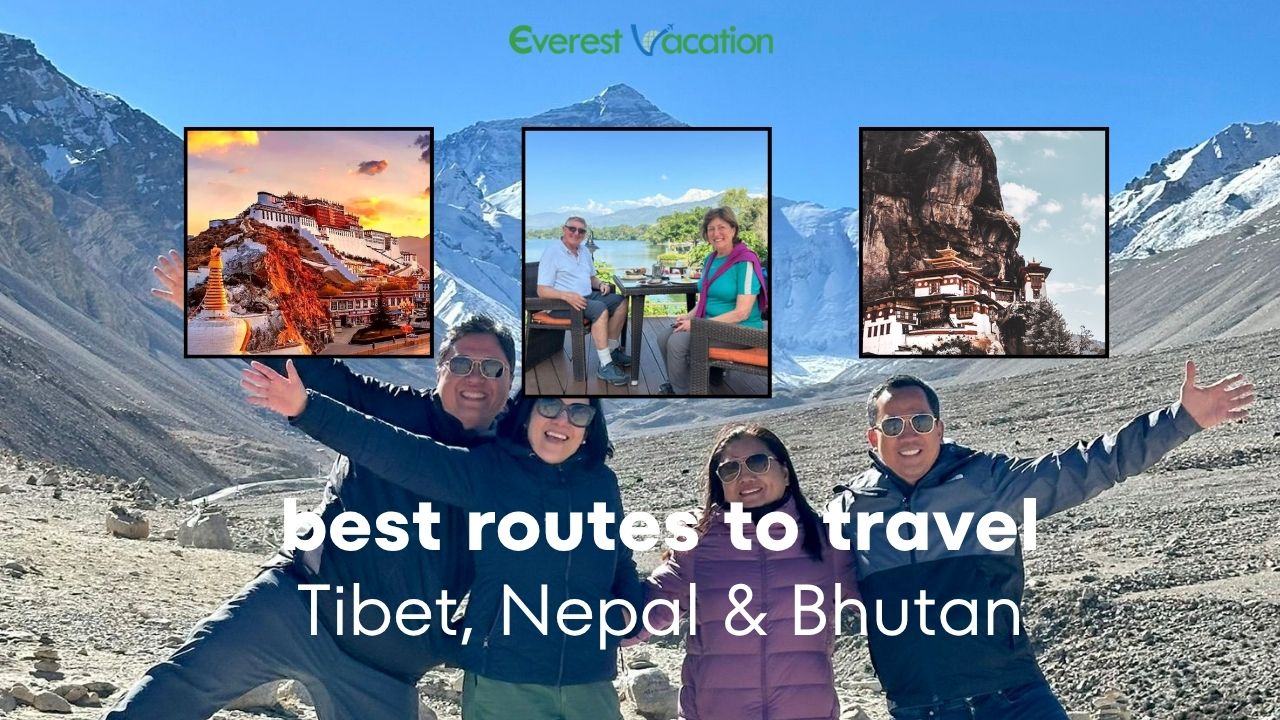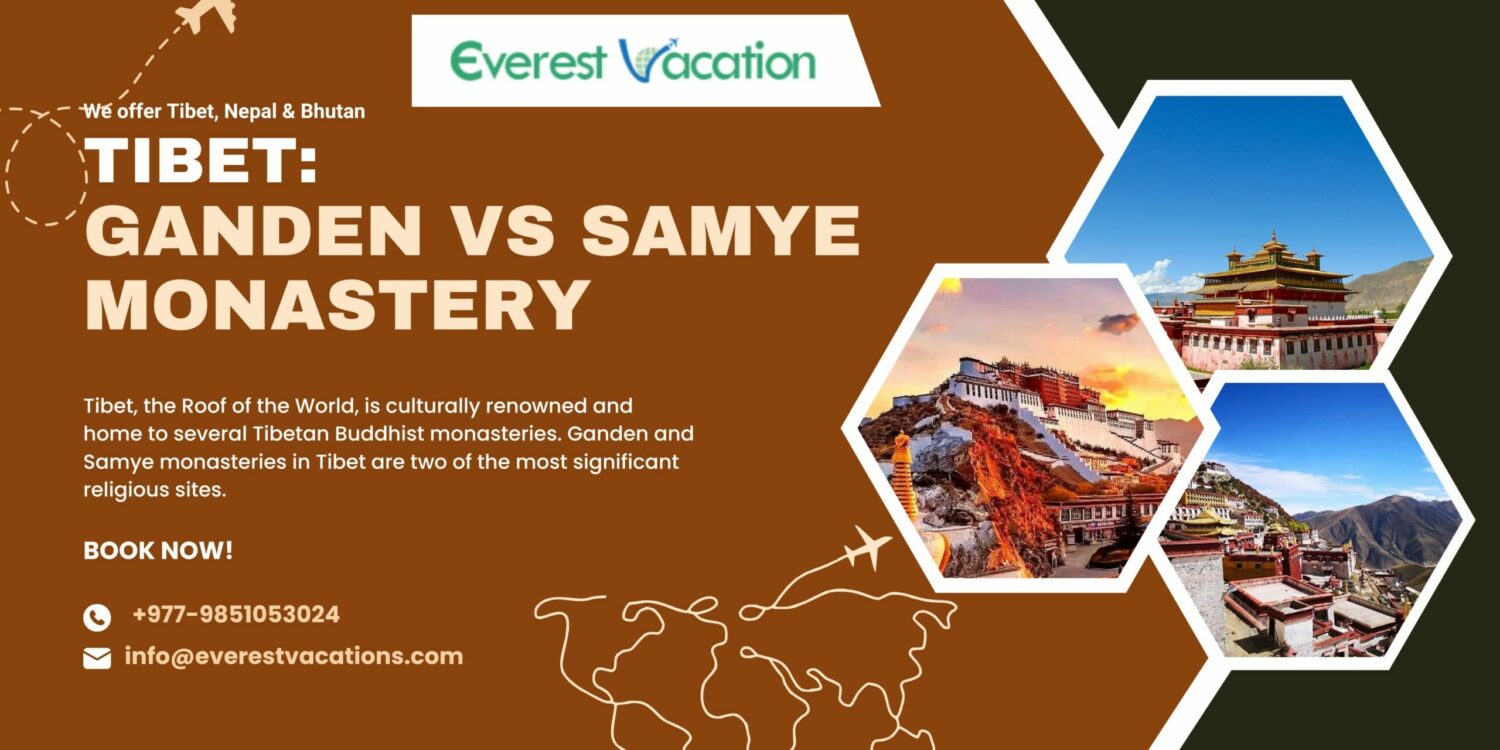Tibet, the Roof of the World, is culturally renowned and home to several Tibetan Buddhist monasteries. Ganden and Samye monasteries in Tibet are two of the most significant religious sites. Both monasteries hold great historical importance as well. Ganden Monastery is one of the Great Three Prime Gelugpa Tradition monasteries affiliated with Tibetan Buddhism. Samye Monastery is the first Buddhist monastery in Tibet associated with Tibetan Buddhism under the Nyingma/Sakya Tradition.
The architecturally impressive Ganden and Samye monasteries are home to several religious artifacts. These monasteries offer cultural, historical, spiritual, and natural experiences that attract tourists from across the globe. Most visitors are fascinated by the location, elevation, and rich history. The comparison table below provides more clarity between Ganden and Samye Monasteries.
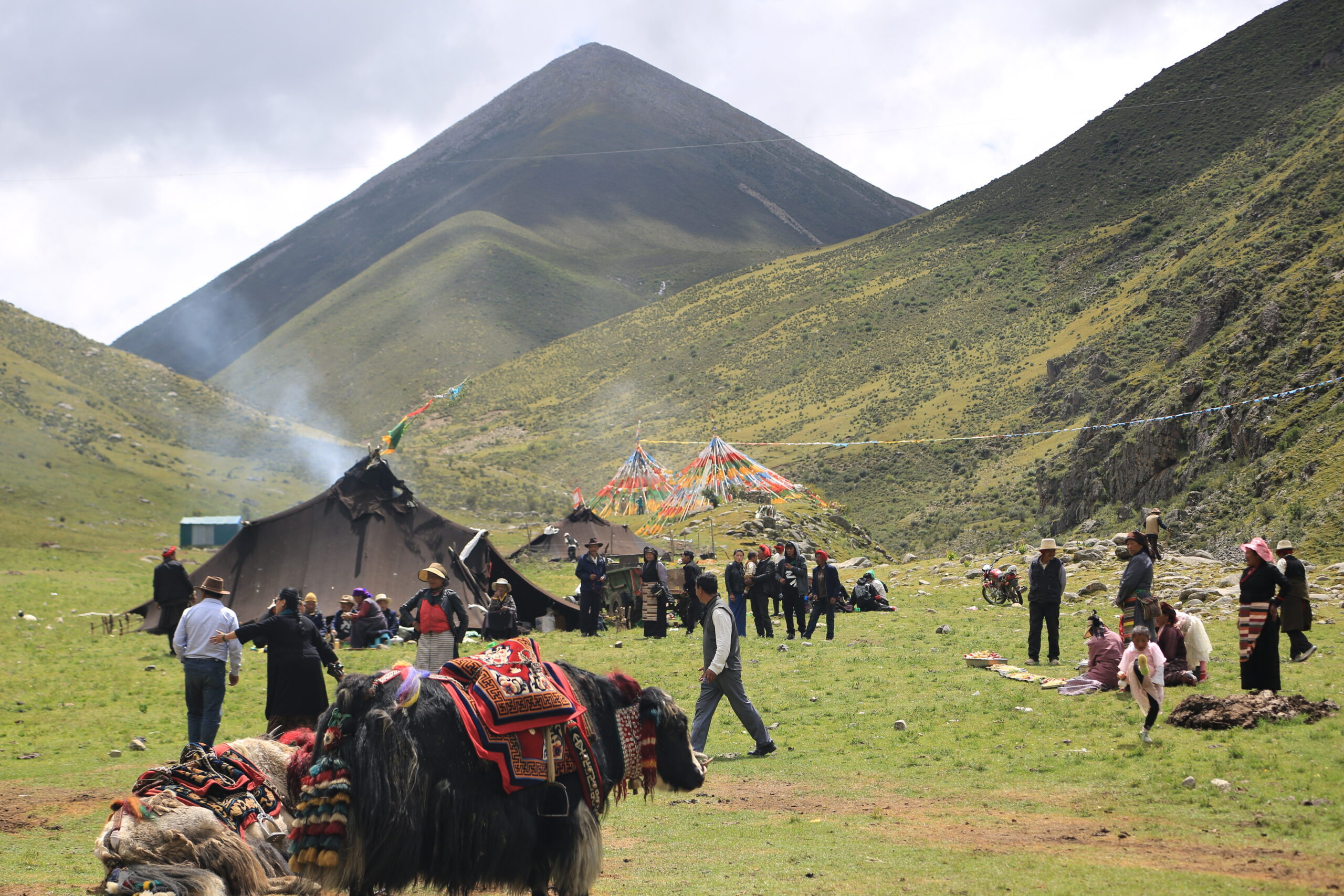
Ganden Monastery vs. Samye Monastery
| Category | Ganden Monastery | Samye Monastery |
| Location | Situated on the Wangbur Mountain | Situated on the Yarlung River Valley, Tsedang |
| Distance | Approx. 60 kilometers northeast of Lhasa | Approx. 124 kilometers southeast of Lhasa |
| Full Name | Gaden Namgyal Ling Monastery | Samyé Migyur Lhundrup Tsug la Khang |
| Meaning | Joyous Victorious Monastery | Inconceivable Unchanging and Spontaneously Perfected Temple |
| Established | 1409 AD | 775-779 AD |
| Altitude | 4,300 m (14,108 ft.) | 3,580 m (11,745 ft.) |
| Significance | One of the Great Three Gelugpa monasteries in Tibet | Tibet’s first Buddhist Monastery under the Nyingma Sect |
| Founder | Je Tsongkhapa | Tibetan King Trisong Detsen, Padma Sambhava and Shantirakshita |
| Tradition/Sect | Gelugpa (Yellow Hat) | Nyingma (Red Hat) |
| Architecture | Features a large central temple and a traditional Tibetan Buddhist architecture style | Features a unique Mandala layout, and blend of Tibetan and Indian architectural styles |
| Cultural Importance | Prominent pilgrimage site and the center for Gelugpa teachings | A major center for Nyingma Tradition (early Tibetan Buddhism and meditation practices) |
| Current Status | Operating as a Religious site for monks, pilgrims, and visitors | Restored and operating as a pilgrimage site |
| Religious Artifacts | Several Buddhist statues, Thangkas, Sacred Relics, Manuscripts and Scriptures | Mandala itself, Guru Rinpoche and Buddha statues, Sacred Relics, Ancient Texts, Thangkas and Murals |
| Opening Hours | 09:00 am to 4:00 pm | 09:00 am to 4:00 pm |
| Ticket Price | 50 CNY/Person | 30 CNY/Person |
How to Get There?
The well-developed roads make it easier to get to both Ganden and Samye monasteries. Ganden Monastery is about 60 km and Samye Monastery is about 124 km from Lhasa. Local vehicles such as shuttle buses and car/taxi or private vehicle tours are means of transportation. A local guide must accompany the visitors which is arranged by the tour operators. Trekking is another adventurous way to explore both monasteries.
| Getting There | Ganden Monastery | Samye Monastery |
| By Car/Taxi | Drive: 1.5 to 2 hours | Drive: 2 to 2.5 hours |
| By Shuttle Buses | Drive: 2 to 2.5 hours | Drive: 2.5 to 3 hours |
| Private Vehicle Tours | Drive: 1.5 to 2 hours | Drive: 3 to 3.5 hours |
| Trekking (Ganden + Samye) | 5 to 6 days combined trek | 5 to 6 days combined trek |
Note: The private vehicle tour is a guided tour so, the time varies with stopovers, sightseeing on the way, road conditions, and route taken.
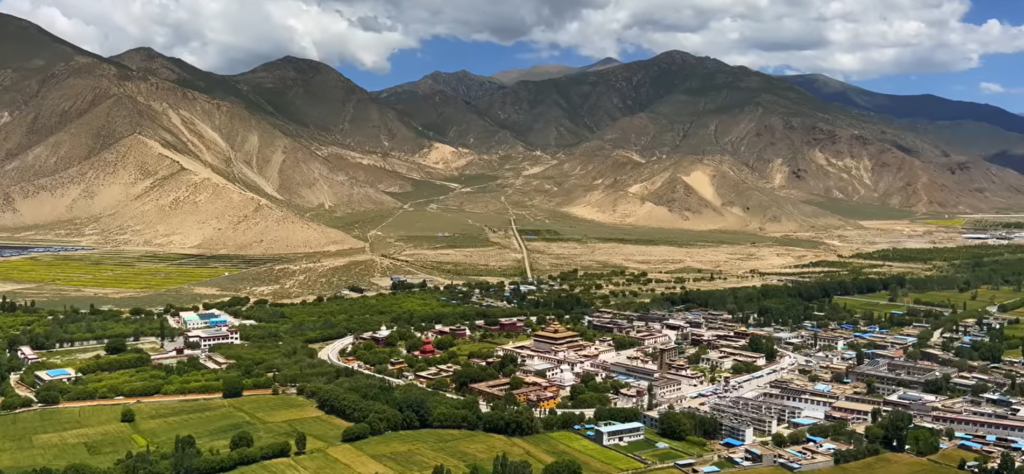
Activities around Ganden and Samye Monasteries
| Activity | Ganden Monastery | Samye Monastery |
| Kora (Circumambulation) | 1 to 2 hours Kora around the monastery, get stunning views of the Kyichu Valley and mountains | 1 to 2 hours Kora around the monastery, get fabulous surrounding landscape views |
| Cultural Exploration | Visit nearby Tibetan villages, learn about the nomadic lifestyle, and experience local culture. | Visit nearby nomadic settlements, and learn about their lifestyle and local culture |
| Monastery Exploration | Visit the main temple, assembly hall (Dukhang), colored Chorten, and Tibetan-style architecture, and learn about the Gelugpa Sect. | Visit the main temple, iconic stupas, unique Mandala-shaped layout, Indian-Nepalese-influenced architecture, and outer courtyard |
| Visit Historical Sites | Explore Drak Yerpa Caves, Yangpachen Monastery | Visit Tibet’s first Yumbulagang Palace, Chimpu Meditation Caves, and the ancient tombs in the Yarlung Valley. |
| Trekking | Combined 5 to 6 days Ganden to Samye Trek offers scenic Tibetan landscapes and villages | The trek through Yarlung River Valley offers scenic surrounding hills and dunes |
| Spiritual Experience | Meditate around the Ganden Monastery to attain spiritual awakening | Spiritual practices and rituals with monks provide unique insights |
| Local Interaction | Get to know locals, their history, culture, and lifestyle better with interactions. | Local interactions offer deep insight into the history, culture, and lifestyle |
| Photography | The plateau, the monastery complex, scenic vistas, and locals | The monastery, dunes, landscapes, local villages, and the sacred river valley |
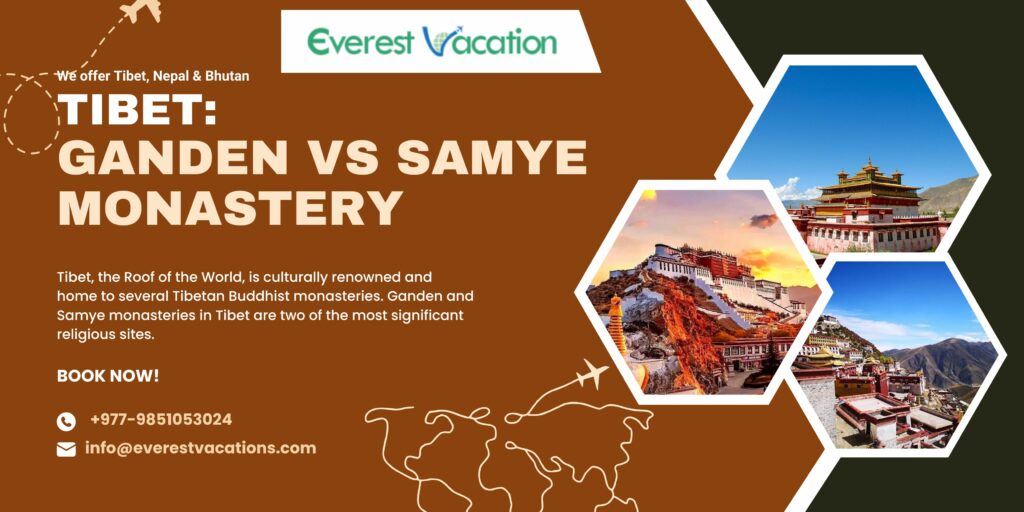
Conclusion
The significant Ganden and Samye monasteries in Tibet provide remarkable insights into Tibet’s rich Buddhist heritage. Ganden monastery is one of the three major Gelugpa traditions. Samye monastery is Tibet’s first Buddhist monastery offering the history of the earliest Buddhist teachings. Visitors seeking short adventures with scenic landscapes can visit Ganden Monastery. Samye monastery visit is ideal for visitors seeking history, ancient Buddhist teachings. Both monasteries are culturally significant and architecturally inspiring. We highly recommend exploring both Ganden and Samye monasteries if time permits. The combined monastery trip offers scenic views, diverse landscapes, and unique historical and cultural insights. A great way to immerse in the monasteries and natural beauty of Tibet.


